How many times have you been trying to hang a picture on a wall and you want to see if it’s level, but you’re too lazy to go out to the garage or basement and get a level? Well, now you don’t have to because there’s an app for that! There is also an app that you can use if you are trying to lose weight and want to count your calories for the day. If you can’t find your car in a parking lot, there’s an app that will tell you where you parked, and it will read it to you in a pirate voice (for inquiring minds, the name of that app is Carr Matey). The moral of the story here is, there is an app for pretty much everything nowadays, and the home screens on our mobile devices are covered with various apps.
There is no doubt that our phones have become so much more than a device that makes phone calls, sends text messages, or checks email; they have become mini mobile machines. Now you can turn the oven on from your phone while you’re on your way home from work, or remotely start your car from your phone, or use your phone as a scanner and turn a regular document into a PDF because let’s be honest, who still faxes anything these days? We can do all of these life-changing and time saving tasks through apps on our phones. The average US adult spent 25 additional minutes per day on mobile apps in 2020 than the year prior. Twenty-five minutes per day using apps might not sound like a lot, but when you say that adults are spending 152 hours per year on apps, that is the sound of cash registers ringing to businesses. That is a lot of opportunity for businesses to place their ads in front of the audience they want to reach, while they’re using apps to listen to music, play games, chat with friends, and watch videos.
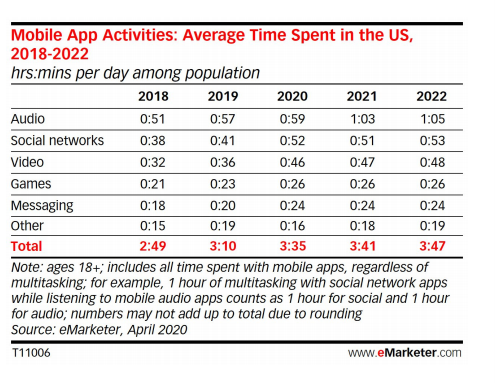
When people think of digital ads, the first thing that might come to mind is seeing an ad for a product or service on a desktop or laptop while they’re browsing the web, or seeing an ad on Facebook while scrolling their News Feed. While those are absolutely digital ads, those same ads can also be seen by users while they are using apps through different digital products. Some of the products that can show ads in apps are:
Facebook and Instagram Ads– Showing your display or video ads across all devices on Facebook and Instagram and on any of the Facebook advertising platforms.
Amazon– Using Amazon targeting data to reach people with your display, video, or OTT ads on Amazon.com, Amazon owned properties and thousands of other websites and apps Amazon has partnered with, across all devices.
Mobile Conquesting™ Ads– Using location based, demographic, and behavioral targeting to reach consumers with display and video ads on their mobile devices.
Display Ads– Ads that go across all devices, appearing on websites or apps, using targeting strategies.
Native Ads- Display or video ads that go across all devices and match the look, feel and context of the website or app where they are seen, using targeting strategies.
Social Mirror™ Ads– Ads that look like your social media display or video posts but appear on other websites and apps, linking back to the social media platform and your website, and run across all devices using our targeting strategies.
Video Ads– Ads that go across all devices, appearing on websites or apps, using targeting strategies for Pre-Roll and Over-The-Top (OTT) content.
One platform where ads will run within Facebook is called Facebook Audience Network. As more and more businesses were seeing the benefit of advertising on the top social platform, the News Feed of users was becoming more and more clogged with ads with nowhere else to put them without sacrificing the user’s experience, so Facebook created its own ad exchange. They went out and decided to partner with top tier mobile apps to extend a Facebook campaign beyond just Facebook so that now you can target those same users while they are using other apps that Facebook has partnered with. Facebook Audience Network is the #1 Mobile Native exchange, and over 40% of the top 500 apps are integrated with Facebook Audience Network.Some example of the apps that are part of Facebook Audience Network are The Wall Street Journal, ABC News- US & World News, Tinder, Candy Blast Mania, and Angry Birds Go!
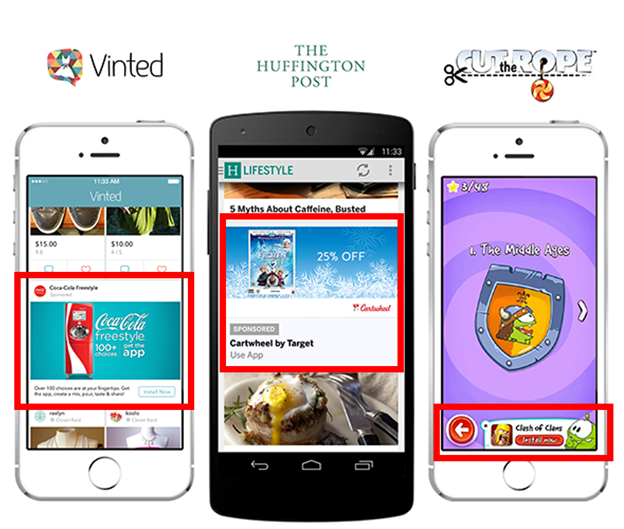
Another platform within the Facebook family that offers advertising inventory is Facebook Messenger. Messenger is Facebook’s mobile instant messaging app and it is the #1 mobile app by number of downloads with 1.3 billion people using Facebook Messenger every month.

These ads appear between the text conversations on the messenger homepage within the app itself. When someone clicks on an ad, they go to a detailed view within Messenger. From there they’ll see the full ad with a call-to-action button that takes them to the destination on where you wish to land people.
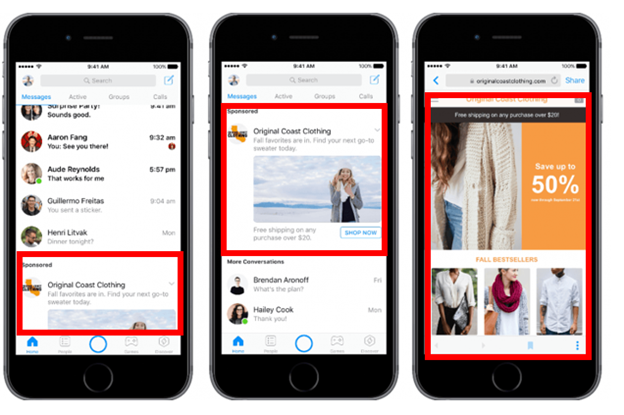
Another platform that adopted a similar strategy is Amazon with Amazon Publishers. Amazon Publishers is a network of over 5,000 websites and apps that Amazon has partnered with to show display, video, and OTT ads to users while they are off Amazon and on these other websites and apps. These websites and apps are all comScore top 100 publishers and high-quality sites that have a direct partner relationship with Amazon including Reddit, BuzzFeed, BBC America, Realtor.com, Web MD, and Tubi to name a few. With the vast amount of data that Amazon has about its users, we can now use that data to reach consumers while they are on Amazon.com, but more importantly, while they are off Amazon on Amazon owned properties(IMDb.com, IMDb TV, and Fire TV) and Amazon Publishers. As a business owner, the idea of having your ad on Amazon.com is really appealing, and it should be since 96% of consumers surveyed had visited Amazon within the last year, but the real power is reaching those same people while they are off Amazon and go onto these other websites and apps because when consumers go to Amazon.com, they typically know what they are looking for and then they leave. With Amazon Publishers, we are reaching that same person on various websites and apps they visit.
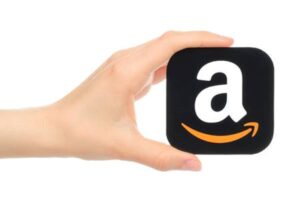
It’s not just that existing users are spending more time in apps, but certain app categories have seen a large increase in users due to the pandemic. Think of your own consumer behavior during the past year or so. I never used the Target app prior to the pandemic, but now, that’s all I use. If I need something from Target (need is a relative term here), I grab my phone, open the app, add items into my cart, select drive up as the pickup option, and I am done. While some of these changes will fade post-pandemic, others will persist, including increased digital video viewing and ecommerce adoption, and these behavioral changes will continue to boost time spent with mobile. This should translate into rapid growth in mobile advertising in the coming years.
With Mobile Conquesting™, there are various ways to reach consumers through all the strategies that are available. Want to reach someone in a certain demographic or that has shown a certain behavior? We can target with Online Behaviors. Want to reach people that have been to a certain location? We can use Offline Behaviors. Have a list of addresses where you only want to reach those people? We can use Address Targeting. Want to reach people in real time while they are at a specific location? We can use Geo-Fencing and Geo-Retargeting. You can do all of that with Mobile Conquesting™ and that is a product that also has ads appearing in apps. Some of the apps that are part of the Mobile Conquesting™ network are Pandora, Yahtzee With Buddies, Weather Bug, Angry Birds, and Sparknotes.

Display, Native, Social Mirror™, and Video Ads are ads that appear across all devices, including smartphones and tablets, so these digital products will also allow for ads to appear within apps that people are using and then see that particular type of ad. In-app usage has increased with the average adult in the U.S. spending 2 hours and 25 minutes a day using mobile apps, which is more than a 10% year-over-year increase. With more people using mobile devices, or having more than one mobile device, that’s causing more apps to be used, which means people are spending more time with apps, resulting in more ad dollars being spent on in-app advertising.
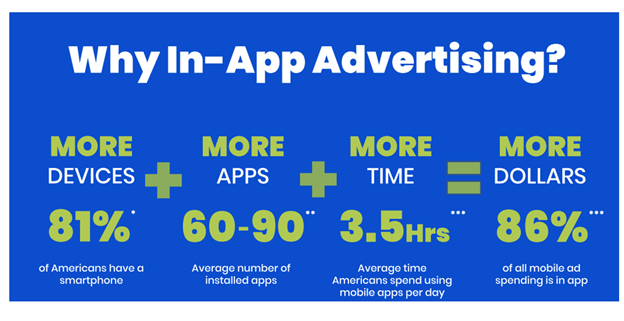
With all the different ways there are to get a message across to consumers, digital advertising allows to target a specific audience that you want to reach, and in multiple ways. As a business owner, if you are seeing that people are spending more time with apps, that is a place that you want to be. When Facebook first started, that was a place that businesses wanted to be because that’s where consumers were spending a lot of time. With the first app being available in 2008, we have had over 10 years for that pool of advertising opportunities to grow. In-app advertising is one of the leading ways for businesses to get their brand in front of consumers, and there are a lot of different ways to do it.
There is no denying that in-app advertising is here to stay and it’s a great place for businesses to take advantage of, but with increased ad spending in apps, is it time for Google Analytics to catch up with the times? We certainly think so because right now, app traffic is very difficult to find in Google Analytics, even with UTM codes. When someone sees the mobile ad inside an app (and most mobile inventory is in apps) and then clicks to the client’s website, the app does not pass the tracking code to Google Analytics, so Google Analytics categorizes it as a bounce since it can’t track that person who comes from an app. Often we see 100% bounce rate, or 0% time spent on site, because the data isn’t being referred properly through a Google Analytics code. The apps goal is to keep them in the app while loading website data within its frame. So with an increase in app usage, it would be interesting to see the “real” data within Google Analytics when it comes to app traffic.


